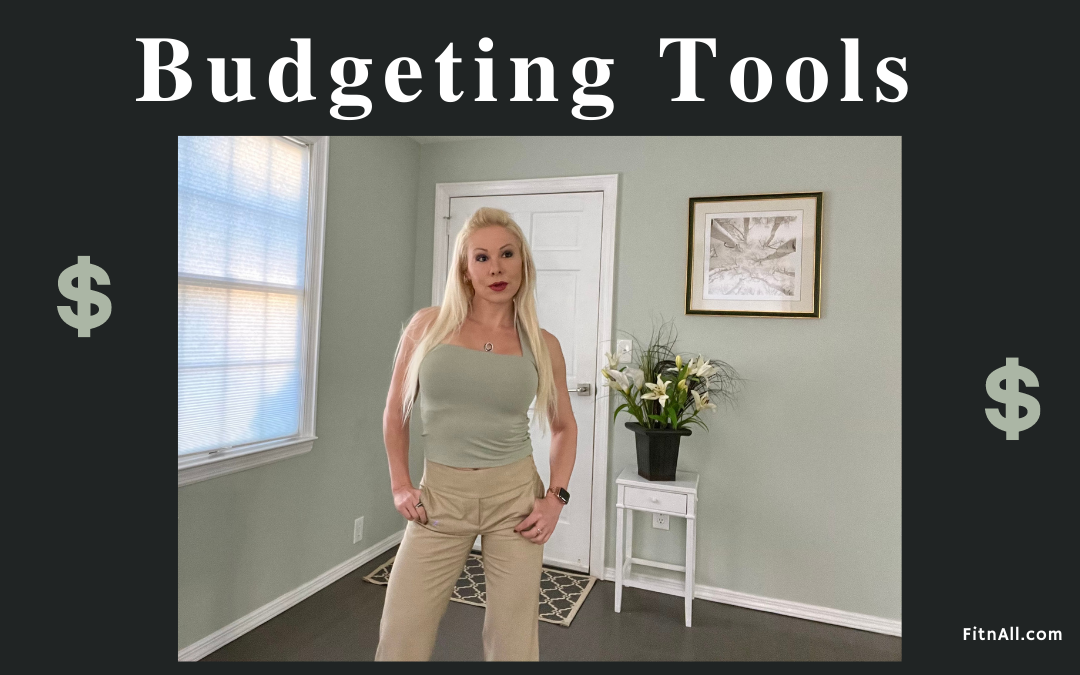Did you know that 77% of American households have at least some type of debt? Being in debt causes stress and affects people emotionally and physically, which is why it’s an important aspect to be addressed. One of the best hacks to your service is budgeting. Read on to learn more about budgets and budgeting tools to consider.
Budgeting
Having a budget may sound limiting but, it’s the opposite, it can help you to attain financial freedom. A budget is an estimation of your revenue (the money you generate from your job /business) and your expenses (your bills) over a period of time. Keeping track of how much you earn and spend helps you know exactly where you spend your money. You can always learn more about budgeting so you can increase your financial awareness.
BENEFITS OF BUDGETING
Here are some benefits related to budgeting:
- When you understand how much money you bring in and how much money you spend you can have more control over your finances.
- Budgeting gives you a picture of your financials so you can make better decisions.
- Even though budgeting can be monotonous and tedious, it helps you understand your spending habits
- Establishing a monthly budget gives you a snapshot of your monthly cash flow.
- Sticking to a budget is a crucial habit that helps you to attain financial independence.
HOW TO CREATE A BUDGET
You can create a budget from scratch by doing the following:
- Calculate your net income: Write down the amount of money you make each month after taxes – your cash inflow.
- List your monthly expenses: Write down your monthly costs – your cash outflow. Common monthly expenses include rent or mortgage payments, utility bills, car payments, insurance costs, transportation, credit card payments, child care, groceries, household expenses, travel, streaming subscriptions, entertainment expenses, memberships, savings contributions [401(k) or high-yield savings account].
- Label these expenses as fixed or variable: Go through your monthly expenses and label each as a fixed (essential expense) or variable cost (nonessential items). For instance, rent/mortgage, utility bills, transportation, insurance, food, and loan payments are fixed costs. Your entertainment bills, travel, clothing (non-essential), subscriptions, and memberships are variable costs. This helps you see the expenses that you can remove if needed.
- Determine the average monthly costs for each expense: Now that you have each monthly expense, you add the amount per month and divide by 12 to get the average monthly bill per category.
- Plan adjustments on your expenses: The final step in creating a budget is to compare your net income to your monthly expenses. This helps you find out if your expenses exceed your income or if your income is much higher than your expenses. If your expenses are higher, you need to examine which items can be removed or cut back on. On the other hand, if you end up with excess money each month, you can evaluate how to invest those excess funds.
Budgeting Tools
You can create your own budget from scratch but the process can be pretty extensive and time-consuming. This is when budgeting tools come into place. They can make the budgeting process much easier and have a real impact on your finances. Nowadays, there are several tools that you can use to create a budget.
Budgeting tools can be divided into three categories: spreadsheets, desktop software, and smartphone apps. Any of them can help you. The best budgeting tool is the one you are willing to use. It’s just a matter of finding the right one for you, depending on your own individual needs.
SPREADSHEETS
Spreadsheets are the original budgeting tools. You can find pre-formatted spreadsheets such as a budgeting template in Google Sheets or Microsoft Excel. Hands-on methods like these in which you manually list your expenses and transactions can help you be more mindful of your spending.
Creating spreadsheets can take some time but once they are created, the bulk of the work is done. From there, you just need to revisit here and there to make small tweaks when your spending habits or income changes.
DESKTOP SOFTWARE

Budgeting software can be an amazing budgeting tool. This type of software helps you plan and allocate your spending. If you already spend time in front of the computer, budgeting software may be the way to go. It’s forward-thinking and streamlines the process, allowing you to stick to a budget and allocate money prior to spending it.
Budgeting software can have a fee. You can pay annually or it can cost you between $5 and $15 per month. However, you can find software that’s completely free too. You can link your bank account with most programs while paid programs offer added features such as credit score and investment monitoring, and customer support.
There are many budgeting software that can help you. The following software options are some of the highly rated ones:
- You Need a Budget (YNAB): It offers great flexibility and you can link your accounts. It teaches you how to budget and guides you so you allocate every dollar and spend it intentionally. Plus, it allows you to track your goals and progress. However, the subscription costs about $15 monthly ($99 annually) and has a steep learning curve. YNAB also has an app.
- Every Dollar: It was created by finance expert Dave Ramsey. This is the best option for families because it allows you to create a budget in less than 10 minutes customizing it to your family’s needs. It gives the ability to link bank accounts and is pretty simple. It allocates every dollar and syncs across devices. Every Dollar has a paid version (about $130 annually) and a free version, in which you have to manually enter transactions.
- Mint: Great option for beginners since aggregates all your accounts. It helps you track your net worth and credit score and is completely free. Plus, it categorizes your transactions automatically. However, the goal-setting options are limited and it can be slow. Mint has an app as well.
- GnuCash: This software runs on your computer – on your desktop, a hard drive, or Dropbox. It’s not an online, cloud-based program. It’s free and helps you track your bank accounts, income, expenses, and investments. It also offers basic accounting functions to manage invoicing, bill payments, and payroll.
BUDGETING APPS
Budgeting apps are very popular budgeting tools. They give you the same benefits as software but you can have your budget at your fingerprints, at all times, since budgeting gets delivered through an app. An aspect to keep in mind is the security of your personal information, banking data, and logins since your phone can be compromised. Look into the level of security, such as 256-bit encryption and multi-factor authentication.
Choosing a budgeting app can make a big difference in your financial life. Some budgeting apps address budgeting in a general manner while others are customizable. Some features involve tracking spending, bill payment, savings goals settings, cash flow manageability, notifications of upcoming bill payments, credit score tracking, and financial goal setting. Many budgeting apps are free while others charge a monthly fee and can help with customer service needs.
- Honeydue: Great option for couples since you can link accounts and customize the information you share with your partner. It notifies you about upcoming bills and excess spending and gives you the ability to communicate through the app about financial issues. It doesn’t charge a fee but doesn’t provide much financial education.
- Goodbudget: It allows you to import bank transactions, transfer money among envelopes (which involves dividing available money into different envelopes – categories), and view your information on charts and graphs. It has a free option but you must categorize your transactions manually after importing your data.
- Simplifi by Quicken: The app syncs your bank accounts, automatically categorizes your spending, tracks your bills, and offers a personalized spending plan with updates. It allows you to limit spending by category so you don’t spend more than what you make, and provides educational information. It costs you $47.99 per year or $5.99 per month.
- PocketGuard: Wonderful app for over-spenders. It links your bank and credit card accounts and notifies you of upcoming bills. The app tracks your income, expenses, and savings goals, allowing you to set spending limits and gain financial control. It has a free option but no phone support.
As you can see, budgeting is very important. Fortunately, there are numerous tools at your disposal. Budgeting tools can help with financial goal setting, and money tracking, and give insights into your savings and spending habits. Since different budgeting tools offer slightly different approaches, you have to be aware of your needs and goals and decide what features are important for you. In this manner, you incorporate a budgeting tool into your life to make better financial decisions and improve your finances.
To a Fitter Healthier You,
The Fitness Wellness Mentor



